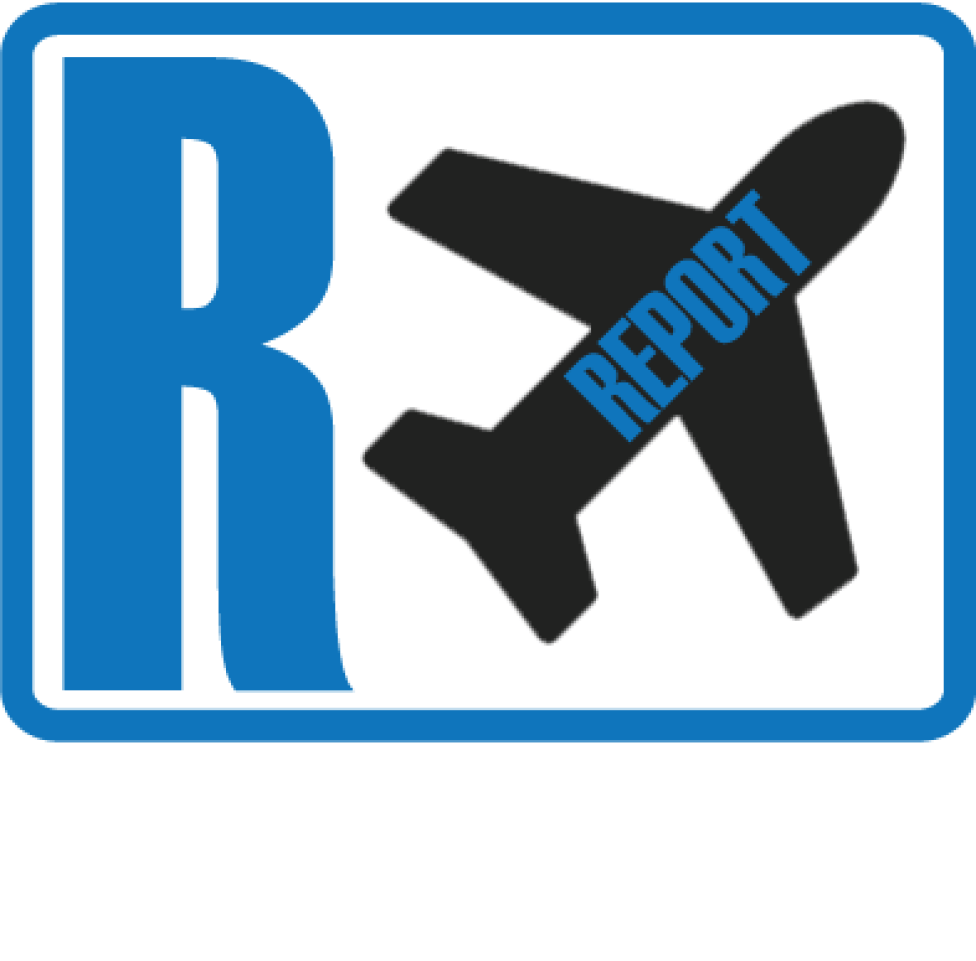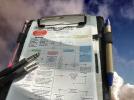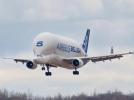Sky Regional DH8D at Montreal on Aug 29th 2011, runway incursion, collision averted by 40 feet
A Sky Regional Airlines de Havilland Dash 8-400, registration C-FSRY performing flight RS-7516 from Toronto,ON to Montreal,QC (Canada) with 25 passengers and 4 crew, had safely landed on Toronto's runway 24R. The captain took control to taxi the aircraft to the apron, tower cleared the aircraft to vacate the runway via taxiway E and hold short of taxiway B, then contact ground. All aircraft communication had been in English.
Tower in the meantime cleared a Beech A100 King Air for takeoff from runway 28, all commuunication in French, the aircraft was about 1200 feet from the threshold of runway 28 at that time.
Ground control cleared the Dash to give way to an Embraer passing in opposite direction then proceed along taxiway E and hold short of runway 28, which was acknowledged by the crew. The aircraft slowed nearly a stand still giving way to the Embraer, then accelerated and taxied at about 17 knots along taxiway E.
The Beech aligned with runway 28 and began their takeoff roll, Vr was set at 100 KIAS. When the aircraft had reached 66 knots over ground the Dash crossed the holding point runway 28 at 17 knots, about 72 seconds after acknowledging to hold short of runway 28, and continued onto runway 28.
About 1200 feet before taxiway E, at a speed of 102 knots over ground, the crew of the Beech rejected takeoff after spotting the Dash on the runway and braked heavily. Ground controller and tower controller noticed the Dash had entered runway 28 and radioed the aircraft to stop, the crew however had changed to apron management frequency and travelled straight across runway 28, only a few seconds later ground control was able to raise the aircraft.
The crew of the Beech, unable to stop their aircraft before the Dash, steered their aircraft to the right of the runway centerline and managed to pass the Dash about 40 feet behind the Dash at a speed of 37 knots over ground.
The Beech positioned back to runway 28 and departed with a short delay. Following an uneventful flight and safe landing maintenance found damage to the left outboard main tyre and minor leak of brake fluid on the left hand side.
The Canadian TSB released their final report concluding the probable causes were:
Findings as to Causes and Contributing Factors
- While the ground controller was instructing SKV7516 to hold short of Runway 28, the pilots’ attention was focused on an aircraft taxiing in the opposite direction. As a result, the SKV7516 pilots did not confirm between themselves the ground controller’s instruction to hold short of Runway 28, and resumed taxiing.
- The SKV7516 flight crew members incorrectly believed that they were permitted to cross Runway 28 notwithstanding the first officer’s accurate readback of the instruction to hold short of Runway 28. As a result, SKV7516 did not stop at the hold line and entered the runway.
- The visual scan conducted by the SKV7516 captain was ineffective and did not identify that PRO104 was on Runway 28.
- SKV7516 crossed Runway 28 without permission in front of PRO104, which was approaching its take-off rotation speed. Consequently, the runway incursion resulted in an extremely serious risk of collision.
Findings as to Risk
- If an aircraft inspection is not conducted following a high-speed rejected take-off, there is a risk that a flight crew may take off with a damaged aircraft.
- If a flight crew is tuned to an incorrect frequency as that crew’s aircraft crosses a runway, there is an increased risk that the ground controllers and airport controllers will not be able to contact the flight crew.
- In the absence of additional strategies to safeguard against runway incursions, the risk of collisions on runways will persist.
Other Findings
- The Beech first officer reacted quickly to the runway incursion because of previous simulator training.
- The Beech rejected its take-off at high speed and had to veer away from its trajectory to avoid colliding with SKV7516.
The TSB analysed: "The runway incursion occurred in daylight and during good visibility. Although the first officer of SKV7516 correctly read back the instruction to hold short of Runway 28, the aircraft crossed the runway without permission when PRO104 was taking off. A collision was narrowly avoided because of the PRO104 first officer’s decision to perform a rejected take-off (RTO) despite the high speed of the aircraft and the action to veer to pass behind the DHC-8. SKV7516 crossed the runway because the flight crew did not remember that they must stop at the hold line, and because they had not observed PRO104 on the runway. The investigation detected no deficiency in either the air traffic control (ATC) system or the airport facilities at Montréal/Pierre Elliott Trudeau International Airport. The occurrence was the result of a combination of operational factors that interacted in such a way that safety margins were not maintained."
The TSB further stated: "To detect unforeseen threats to air safety, controllers must, among other tasks, monitor the movements of aircraft and vehicles on the ground at the airport. Since they cannot monitor all aircraft and vehicles at the same time, controllers must set priorities. In this case, the ground controller did not continuously monitor SKV7516 as it approached the hold line. Since the aircraft was operated by a scheduled airline, and since the crew had correctly read back the instruction to hold short of Runway 28, the ground controller could reasonably assume that SKV7516 did not represent a danger requiring continuous monitoring. In these circumstances, because the airport does not have a RIMCAS, the controllers detected the runway incursion only as the aircraft entered the runway."
The TSB further analysed that the Dash crew was not provided with the reason for holding short of runway 28, the pending takeoff of the Beech on runway 28 and stated: "In view of the foregoing, it seems reasonable to assume that, if a flight crew is given the reason for a restriction to hold short, their situational awareness would be heightened, and the risk of not recalling the instruction would be reduced. An accurate mental picture of traffic on the ground can also help pilots detect either a controller or operator error."
The TSB reported that neither of the Dash pilots recalled the instruction to hold short of runway 28. The TSB stated: "However, neither of the pilots remembered the instruction to hold short of Runway 28, nor did either confirm the controller’s instruction with each other, as required by standard operating procedures (SOPs). The proximity of the Embraer caused the flight crew to prioritize the tasks of stopping the aircraft in the face of oncoming traffic and then start the aircraft moving again. After allowing the Embraer to pass, the first officer performed the normal after-landing checks while the captain manoeuvred the aircraft." The TSB analysed that this immediate task to avoid the Embraer likely compromised the crew's ability to recall the instruction by ground control and repeat the instruction to each other as required by standard operating procedures.
The TSB analysed that a crew would normally visually scan the runway before crossing the hold short line. In this particular case the crew had scanned the runway already before reaching the hold short line, the captain thus did not see the Beech which was already on the runway with its landing lights turned on, the reasons for not seeing the Beech probably being the rather small dimension of the Beech, background reflection of sun rays and the de-icing bay sign structures and inattentional blindness (the captain was not expecting to see an aircraft).
The TSB analysed that listening to the correct frequency is essential in avoid runway incursions. In this case the Dash was not on tower frequency as needed but on apron frequency. This however did not contribute to the sequence of events as there had been no active communication between tower and the Beech for almost two minutes between the Beech receiving takeoff clearance and commencing their takeoff.
When tower and ground controller detected the Dash had crossed the hold short line and was about to enter the runway with the Beech reaching their Vr, ground control issued an immediate stop instruction, the Dash crew however had already changed to apron frequency and did not hear the instruction, only after apron directed the crew back to ground radio communication with ground was restored.
The TSB analysed: "One might assume that a controller must intervene with flight crews whenever realizing that a collision is about to occur. However, such an intervention in a dynamic environment carries risks, because numerous variables are involved. Both intervention and lack thereof can reduce or increase the risks of a collision. In the case of an instruction to stop taxiing or take-off, the controller does not know the aircraft’s ability to stop. The controller cannot know whether the taxiing aircraft will stop before or on the runway, nor does the controller know whether the aircraft taking off could stop before the collision or whether the aircraft has exceeded V1."
The TSB analysed that the Dash had been instructed to contact ground about 21 seconds prior to the Beech receiving takeoff clearance, hence it was unlikely both aircraft were on the same frequency at that time. The use of English and French thus played no role in the sequence of events.
Safety actions were taken by Sky Regional to reduce distraction of crew during taxi, the airport of Montreal by applying red signs on taxiway E on both sides of runway 10/28, and by NAV Canada to reduce the use of runway 28 in order to reduce runway incursions.
Map (Graphics: TSB):
http://avherald.com/h?article=46e67eb6














Komentarze